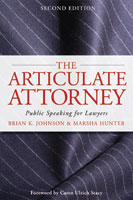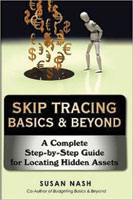 Verdict: It’s a Keeper
Verdict: It’s a Keeper
Secret History
By Martin Roberts (Bloomington, IN: AuthorHouse, 2012). 286 pgs. $19.76. Order, www.authorhouse.com.
Reviewed by Aaron Frederickson
An old African proverb states, “Until lions have their own historians, tales of the hunt shall always glorify the hunter.” In Secret History, Martin Roberts explores various perceived miscarriages of justice that took place in the United States during the Red Scare, as well as other cases abroad. In doing so, the author has written a treatise on justice from the perspective, and in defense, of the hunted.
The main focus of the book revolves around Whittaker Chambers and his testimony before the House Un-American Activities Committee, which led to the downfall of Alger Hiss. Roberts take a single-sided approach as he attempts to poke holes in not only the credibility of Chambers but also how the U.S. government was combatting the real or imagined threat of Communist revolution in the 1940s and 1950s.
Want to review a book?
The following books are available for review. Please request the book and writing guidelines from Wisconsin Lawyer managing editor Karlé Lester, at klester@wisbar.org or (608) 250-6127. Reviewers may keep the book reviewed. Reviews of about 500 words are due within 45 days of receiving the book. Reviews are published, space permitting, in the order received and may be edited for length and clarity.
- Business and Commercial Litigation in Federal Courts, 3rd ed., by Robert L. Haig, editor-in-chief and 251 authors (New York, NY: Thomson Reuters, 2011-14). 12 vols. CD-ROM. $1392. Order, http://legalsolutions.thomsonreuters.com. (Publisher will ship direct to reviewer.)
- Nursing a Grudge, by Michael Biehl (Sarasota, FL: Pineapple Press Inc., 2013) (novel). 288 pgs. $14.95. Order, www.amazon.com.
- Ripples in Opperman’s Pond, by Doug Zipes (Bloomington, IN: iUniverse Inc., 2013) (novel). 269 pgs. $16.05. Order, www.amazon.com.
- Unfair Competition: Murder by Gunshot, by Christopher Norgaard (Los Angeles, CA: Crestview Publications, 2013). 131 pgs. Order, www.amazon.com.
Roberts documents what some consider Chambers’ questionable background and his connection to Communist activities and his later march toward American patriotism as he struggled to make amends for his sinister past. Although these efforts are well documented, some accusations leveled by the author against Chambers and other individuals appear to be based in speculation and spite rather than fact. In other instances, the author seems to draw conclusions based on the slight possibility of an event taking place, instead of giving deference to the American concept of reasonable doubt. In doing so, Roberts on occasion goes out on the proverbial cliff to reach what appears to be a preconceived conclusion.
Roberts also tackles the alleged miscarriage of justice perpetrated by the British government against IRA terrorists. This portion of the book was of more interest to me because it covered topics not typically known about or discussed in the United States. However, Roberts at some points goes out of his way to avoid the obvious conclusion and instead reach a pre-determined result.
As a whole, this book was interesting and kept my reviewer’s attention with relevant information not typically found in the annals of American history. It also stimulated additional research and curiosity into the topics covered, along with questions about how history typically is presented from the victor’s point of view.
The book is relevant in today’s society as Americans struggle with questions concerning the use of NSA wire-tapping techniques, domestic use of drones to collect intelligence, and other methods of intrusion on personal privacy. The book provides a European perspective on notions of justice and rights that Americans hold sacred and that are enshrined in the Bill of Rights. The reality is that issues we dealt with more than a half century ago continue to challenge us as we determine the balance between individual liberty and collective security.
Aaron Frederickson, William Mitchell 2002, is founder of MSP Compliance Solutions, St. Paul, Minn.
 Verdict: It’s a Keeper
Verdict: It’s a Keeper
Fighting for Their Lives: Inside the Experiences of Capital Defense Attorneys
By Susannah Sheffer (Nashville, TN: Vanderbilt Univ. Press, 2013). 224 pgs. $27.95. Order, www.vanderbiltuniversitypress.com.
Reviewed by Lijana Puknaite
Susannah Sheffer offers rare insight into capital defense attorneys’ emotional world in Fighting for Their Lives: Inside the Experience of Capital Defense Attorneys. The author explores the experiences of 20 postconviction capital defenders. She reveals the motivations for pursuing this psychologically intense area of law, the moving fight for each client’s life up to the last moment before the execution, reactions to witnessing executions, and the effect this work has on the attorneys’ lives and their families.
The book’s main strength is its substance. Because Wisconsin does not have a death penalty, there are few opportunities here to talk with practicing capital defense attorneys. When those rare occasions arise, most attorneys do not like to share the emotional details of their practice. In this book the author leverages her status as both an insider and an outsider (she is engaged in death penalty work without the personal experience of being a capital defender) to uncover the innermost world of capital defenders through frank and open conversations.
In the chapter “The Fighting,” for example, one of the capital defense attorneys reveals his feelings about his battle with cancer. Cancer gave him a glimpse of mortality – a feeling that his clients face every day. He compares himself – a capital defense lawyer trying to prevent a client’s execution – to the oncologist who helped him beat cancer. In the same chapter, another attorney explains the helplessness and desperation of his work by sharing an anecdotal illustration comparing a capital defense attorney to a great surgeon. In the surgeon’s situation, the only thing he has to worry about is saving someone who is at death’s door. In contrast, a capital defense attorney is not only trying to save a client’s life but also battling another “surgeon” in the “operating room” – the prosecutor – who is trying to kill the “patient”: the defendant.
Although the book’s substance is interesting, the presentation and format are somewhat distracting. The author combines the comments and reactions of multiple attorneys in a single paragraph, all supplemented by the author’s own responses and observations. Although I understand the author’s desire to downplay the personalities of the interviewees, I found it quite challenging to follow and differentiate the participants in the interviews.
Overall, this is a powerful book. I would recommend it to anyone, because the death penalty is an important societal issue. However, this might not be the best book for bedtime reading.
Lijana Pukinaite, Illinois 2009, is a staff attorney at the Dane County Circuit Court, Madison.
 Verdict: It’s a Keeper
Verdict: It’s a Keeper
The Articulate Attorney: Public Speaking for Lawyers
By Brian K. Johnson & Marsha Hunter (Phoenix, AZ.: Crown King Books, 2nd ed. 2013). 208 pgs. $24.99. Order, www.ipgbook.com.
Reviewed by Peter M. Young
The foreword to The Articulate Attorney begins by stating the obvious: Communication is “the most critical lawyering skill.” The authors then go on to describe how – with practice – any lawyer can learn to articulately communicate by synchronizing body, brain, and voice into one fluid communicative machine. The book holds valuable lessons for all attorneys, regardless of field of practice. Every lawyer must – at some point – persuasively communicate an idea to someone, and this book can help hone the ability to do so.
In addition to being interesting, the book is structured in a very intuitive fashion. The first chapter – “Your Body” – gives the reader good suggestions regarding how to confidently, credibly, and comfortably address the audience before even saying a word. In addition to suggesting how to appear persuasive, this chapter provides handy illustrations and charts that help to further clarify the authors’ message. From a practical standpoint, this chapter is very useful in that it illustrates certain persuasive techniques that are likely underemphasized in a more formal learning environment, for example, law school.
The second chapter – “Your Brain” – does an effective job of teaching the reader how to convert his or her brain from a rapid-fire source of nervous energy into a more coherent source of good ideas, which can then be translated into a comprehensible vocal message, using techniques described in the third chapter – “Your Voice.” This chapter describes the volume, pitch, pace, and mechanics of properly phrasing a spoken sentence or series of sentences.
Finally, the fourth chapter – “How to Practice” – does not simply admonish the reader regarding the importance of practice as an exercise but gives helpful practical tips on how to do so while employing the lessons of all three previous chapters at once. Perhaps the most helpful component of this chapter is a subsection that deals with how to effectively combat certain common “problems” encountered by public speakers: speaking too loudly or softly, speaking too quickly, generous use of the word um, and so on.
In the final analysis, The Articulate Attorney presents a multistep method for the clear and persuasive expression of ideas. The book’s usefulness is not limited strictly to those of us who talk to juries but is likely beneficial to any lawyer who has to convince anybody of anything. Although written by nonlawyers, the book presents a coherent “how to” guide for lawyers. The opportunity to learn from two authors whose minds have not been indelibly scarred by the Socratic method and other such cruelties is certainly an opportunity worth taking advantage of.
Peter M. Young, Marquette 2009, is an associate with Habush Habush & Rottier, S.C. and practices in the Wausau, Rhinelander, and Stevens Point offices. He focuses his practice on personal injury and product liability litigation.
 Verdict: It’s a Keeper
Verdict: It’s a Keeper
Skip Tracing Basics & Beyond: A Complete, Step-by-Step Guide for Locating Hidden Assets
By Susan Nash (iUniverse Inc., 2nd ed. 2012). 418 pgs. $19.97. Order www.barnesandnoble.com.
Reviewed by Valerie Revnew
I was interested in this book as a way to help my clients collect on judgments. Skip Tracing Basics is broken down into two major parts. In the first 200 pages or so, the author focuses on the different types of skip traces (that is, asset searches), common methods for finding information for the different classifications, insights on different occupation options, and warnings on how to protect oneself from identity thieves, all while inserting humorous stories with occasional random tips, such as how to tell if you are looking into a regular or a two-way mirror.
A majority of the book focuses on finding people as opposed to finding assets. There is also more of a focus on finding individuals once you have a substantial amount of information such as Social Security number, driver’s license numbers, and other information from a mortgage application or similar paperwork as opposed to how to find the substantial information on an individual or how to verify you have the correct Steve Smith. I would have liked to see more focus on those latter areas.
The author attempts to provide a system that can be used, with variations, from state to state. Admittedly, this is a difficult task. For the most part, she does a good job at laying out the different types of skips (unintentional, convenient, intentional, soft-core intentional, hard-core intentional, and intentional-skip fraud) that asset searchers will encounter and general outlines for what techniques generally work the best for each type. She provides brief descriptions of all of them as well as the most common and easiest methods for trying to find each type. She also highlights the major reasons for performing searches, including pre-litigation planning, locating witnesses, postjudgment collections, finding heirs, and finding former tenants.
Nash attempts to cover a lot of ground but starts to get lost in the middle of the book when talking about tracing real estate assets. She goes into the entire robo-signing foreclosure debacle without providing context for how robo-signing affects finding skips. She also touts her abilities a little too much for my taste: there are several more pages to the book than necessary talking about how good she is and how successful she has become. The book could be streamlined by removing sentences such as, “Skip tracers do not need to lie to get to the bottom of the truth. Let the facts speak for themselves and don’t get in the way of facts.”
The most useful part of the book by far is the second half, consisting of reference materials Nash uses in her asset searches. Included are descriptions of websites, broken down into categories such as databases, public records, governmental records, criminal records, military records, corporate links, and social media. The websites run the gamut from the expected three credit bureaus, to sites that contain mug shots of people arrested and charged with crimes, www.bustedmugshots.com, to how to trace a person’s invisible tracks on the Internet (history that is not a regular part of regular search engines). Nash includes copies of the applicable federal statutes, such as the Fair Debt Collection Practices Act and the Gramm-Leach-Bliley Act, and reference material for each state’s Secretary of State agency.
For me, this book was a keeper as a reference material on websites to use to search different service providers. I would not purchase this book expecting to be able to read it and immediately begin collecting on judgments but would definitely expect the book to assist in an already existing practice.
Valerie (Val) J. Revnew, DePaul 2002, is a business attorney with Epiphany Law LLC, Appleton, where she heads the commercial litigation department.
